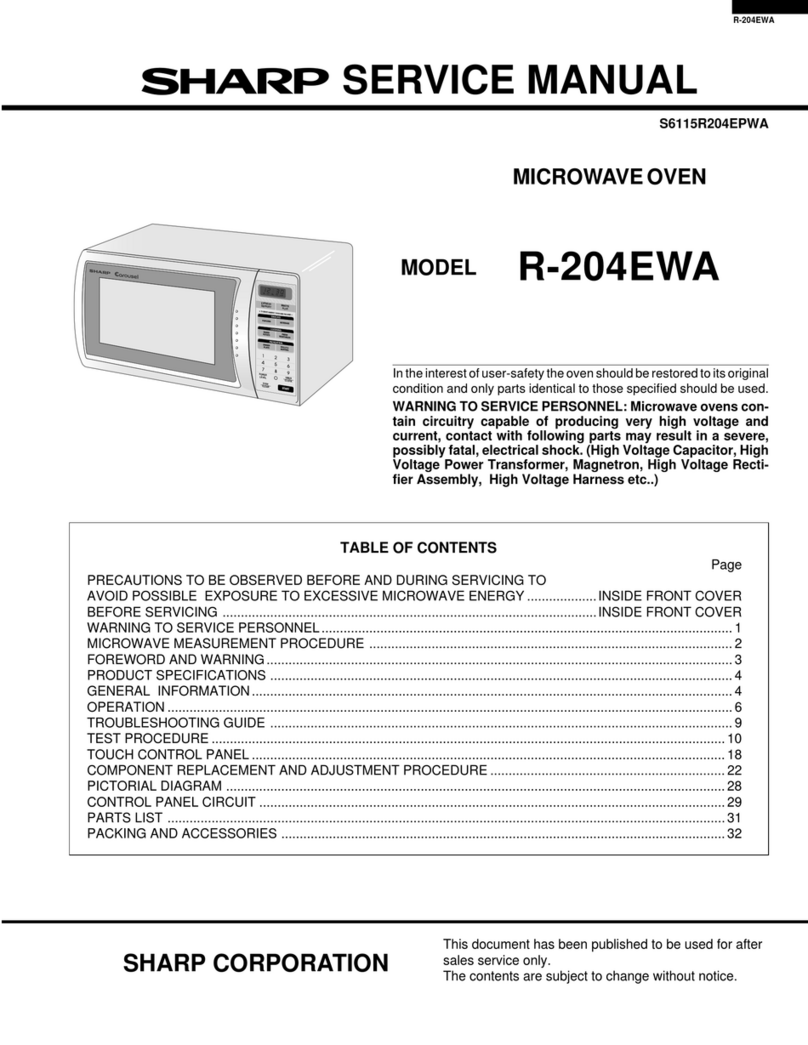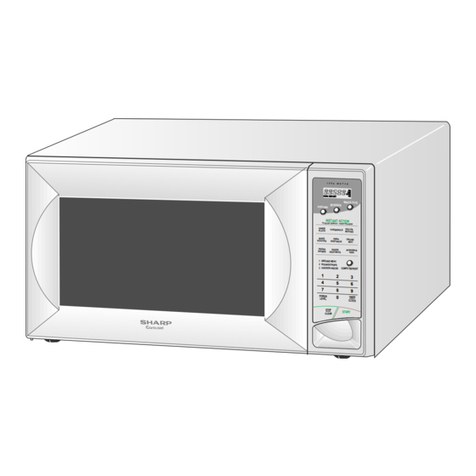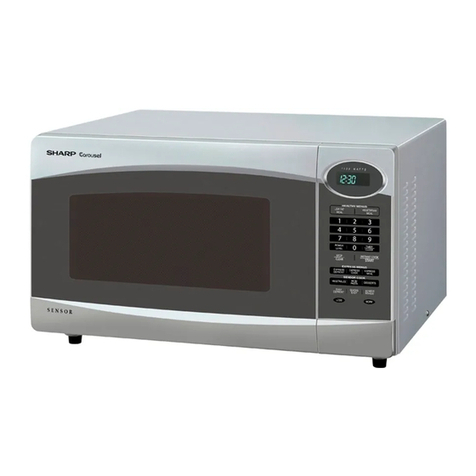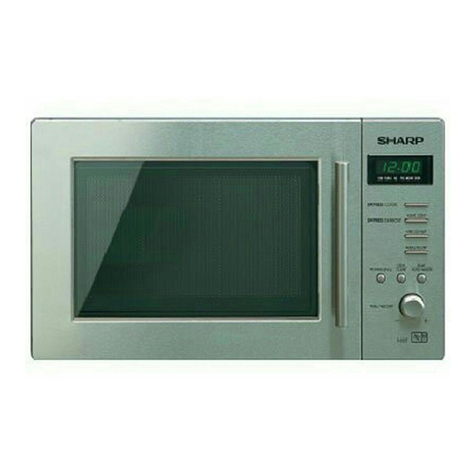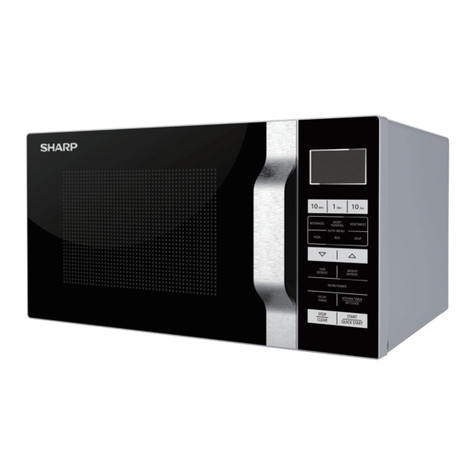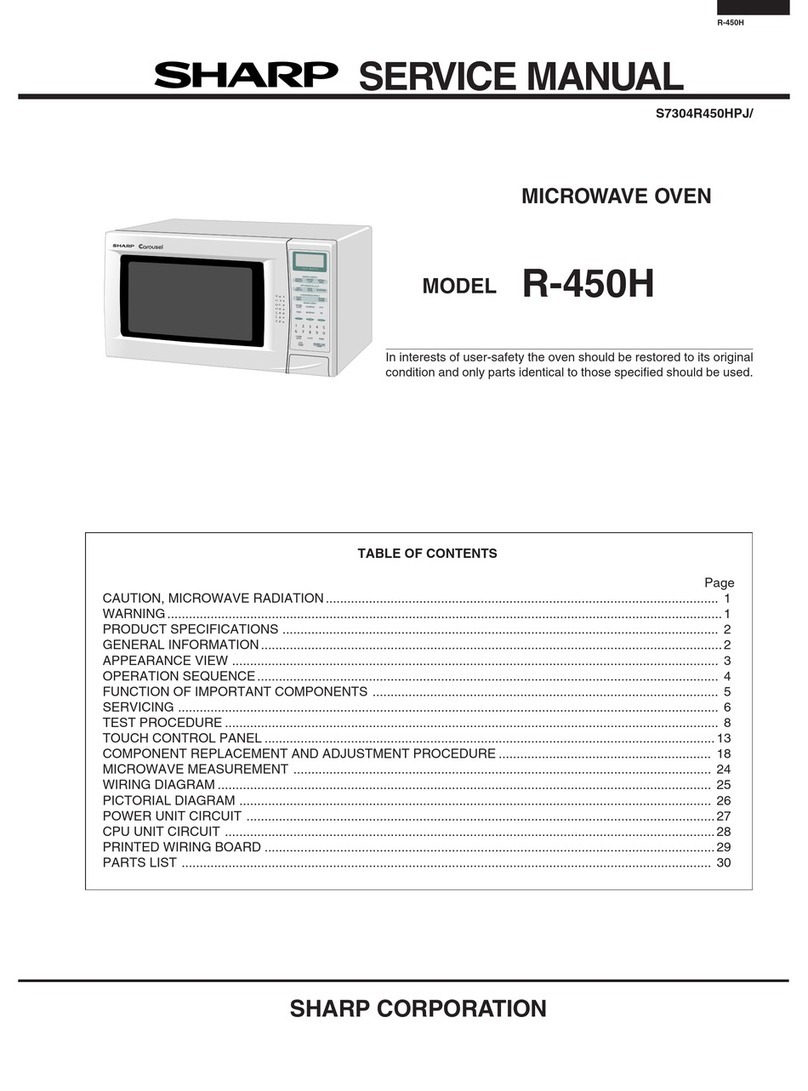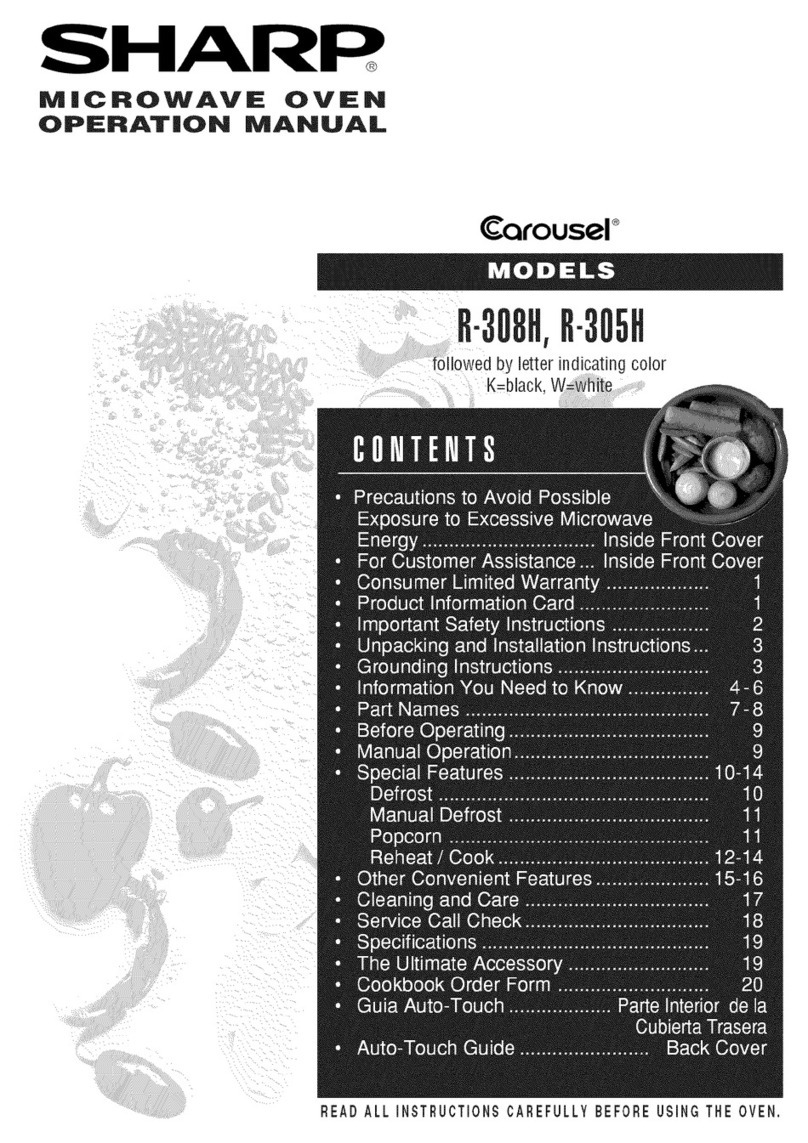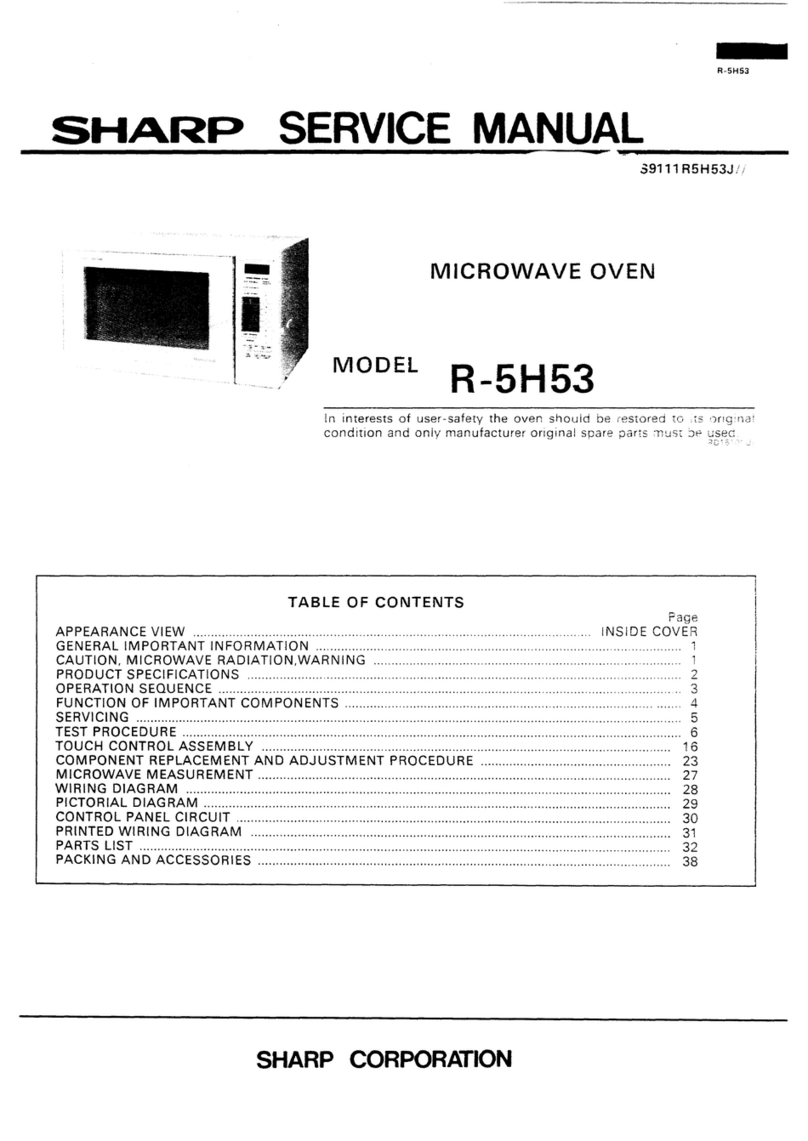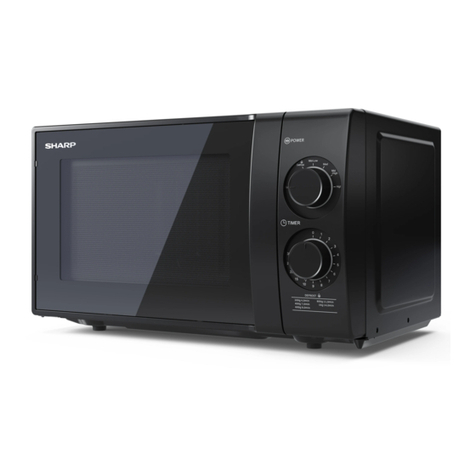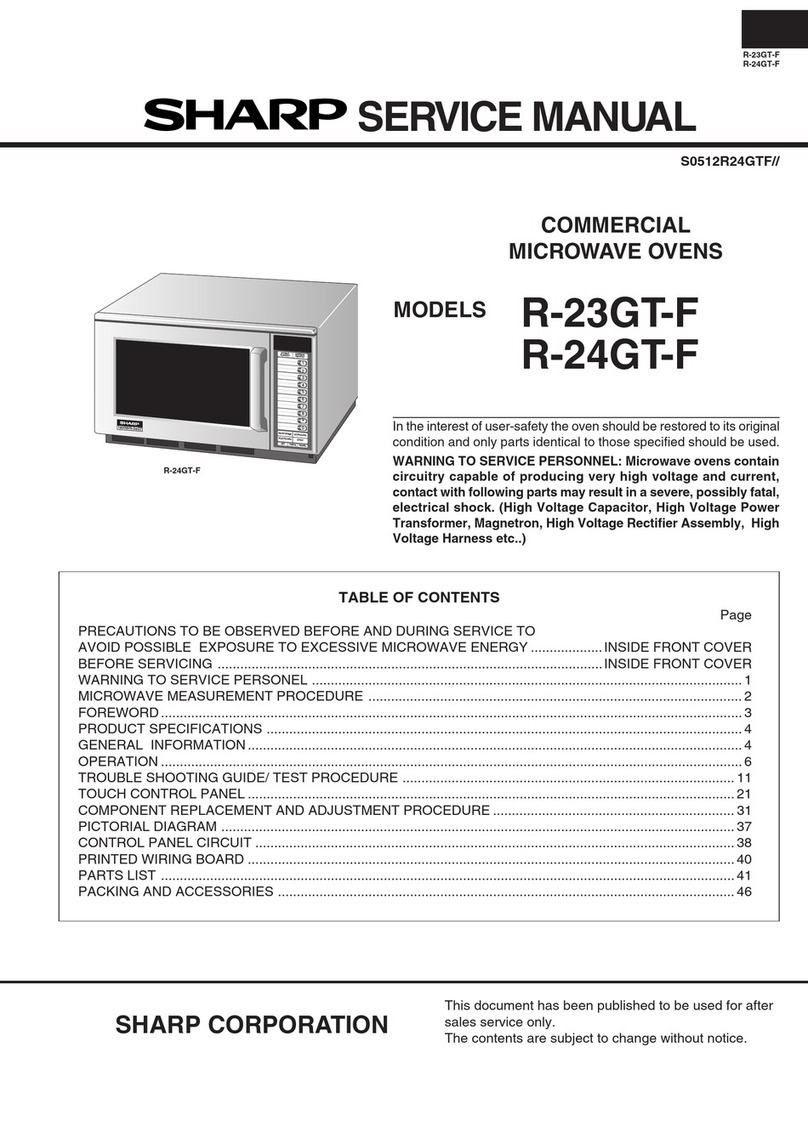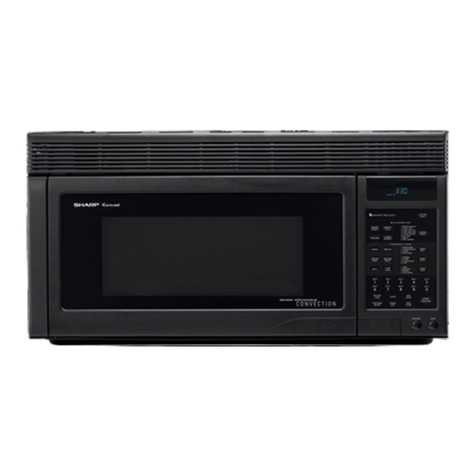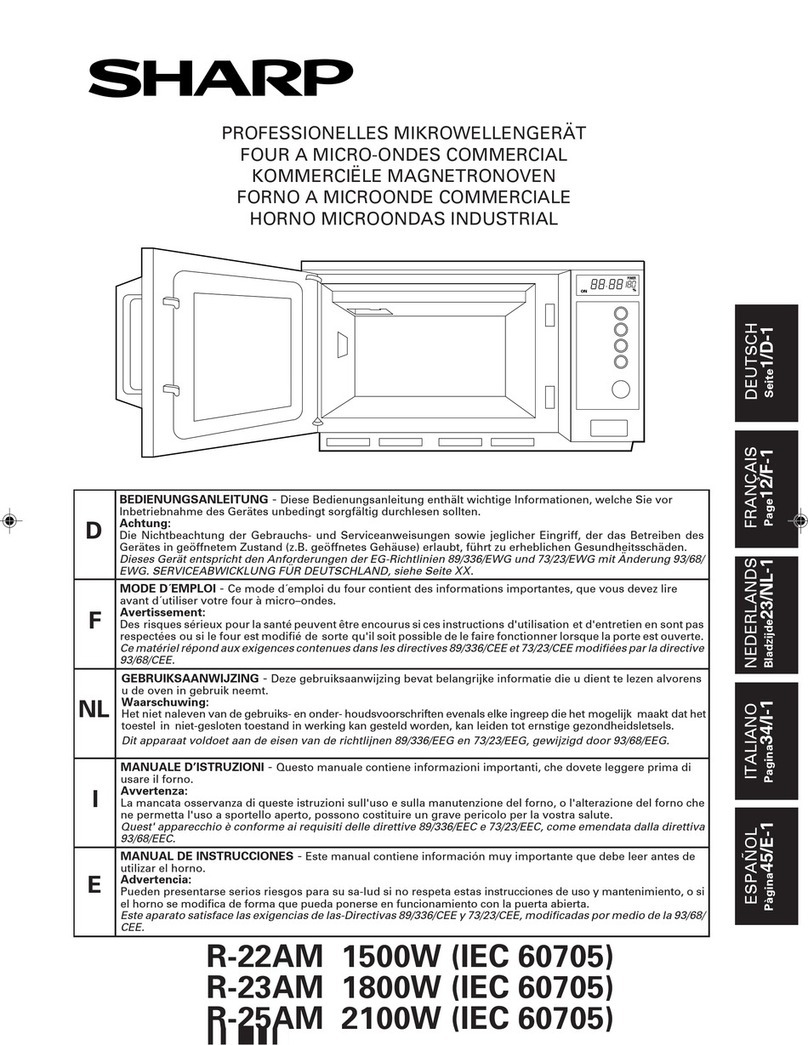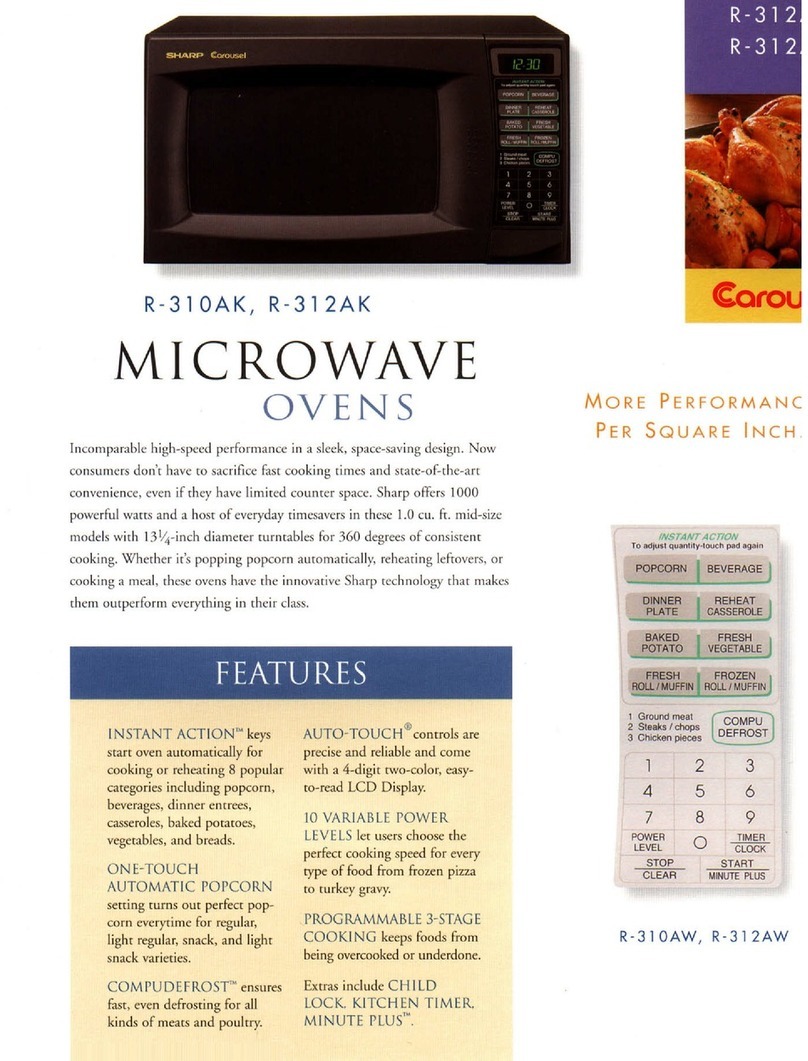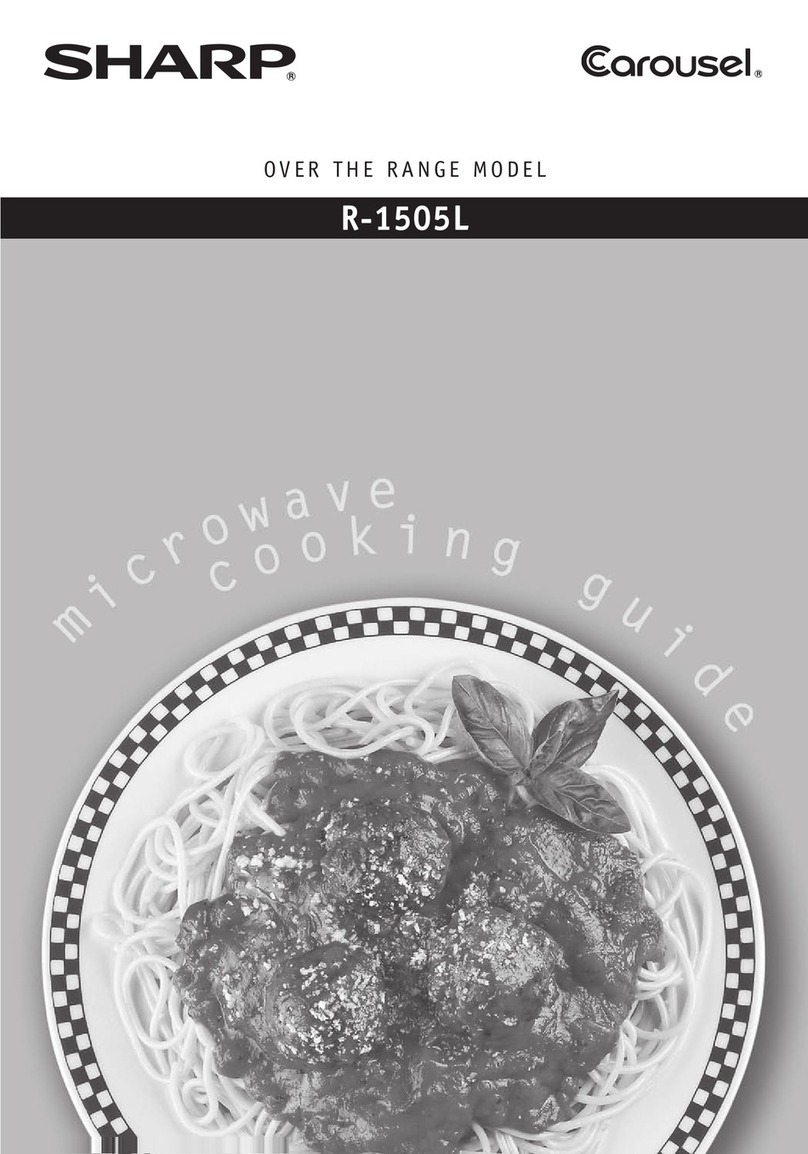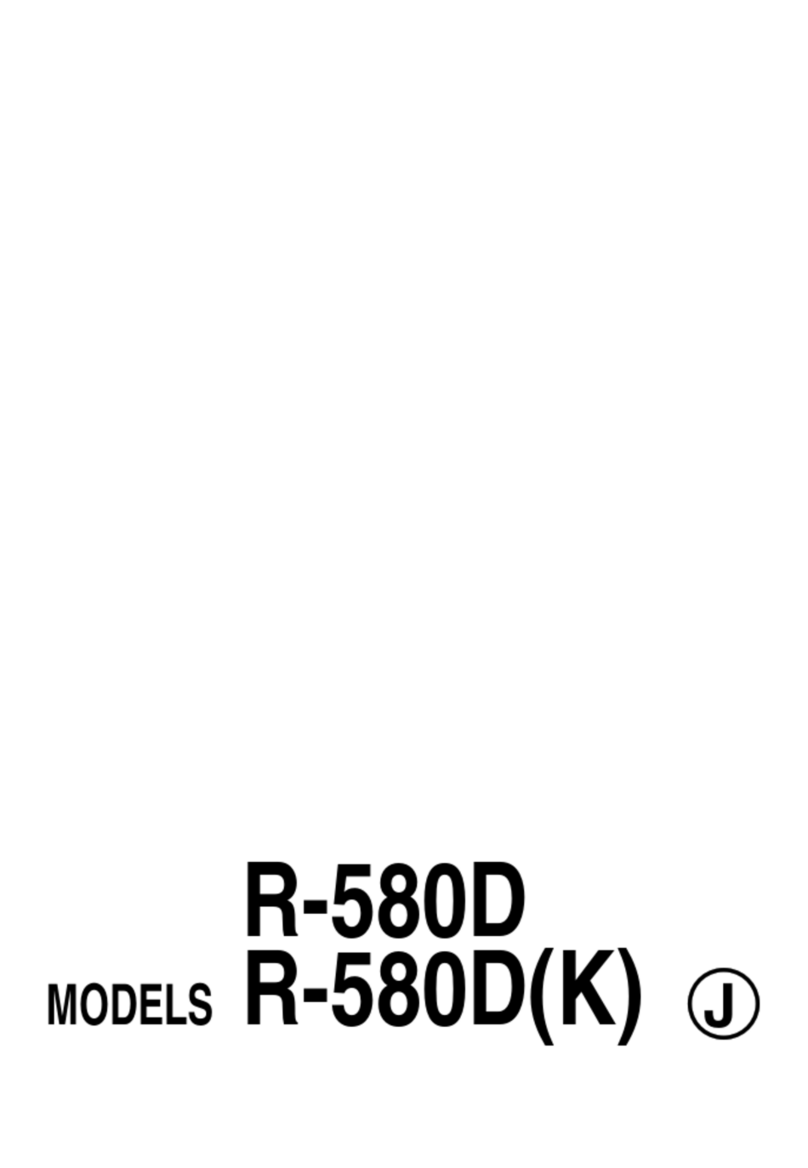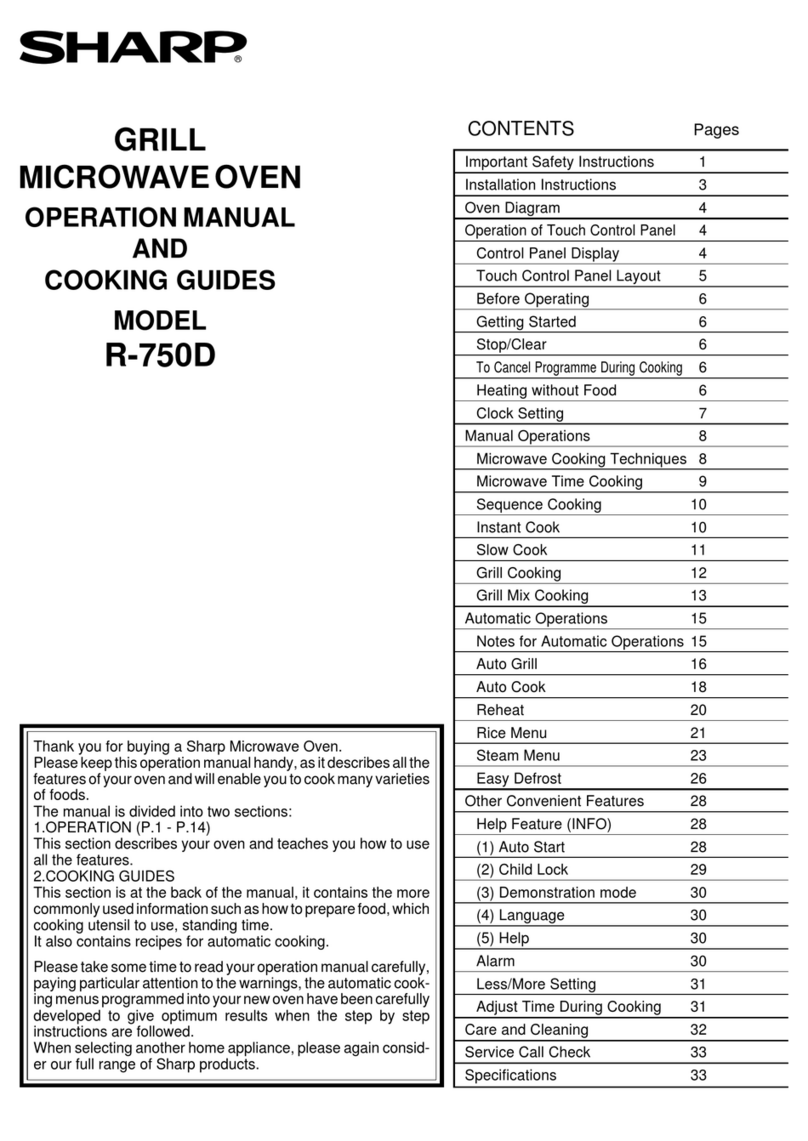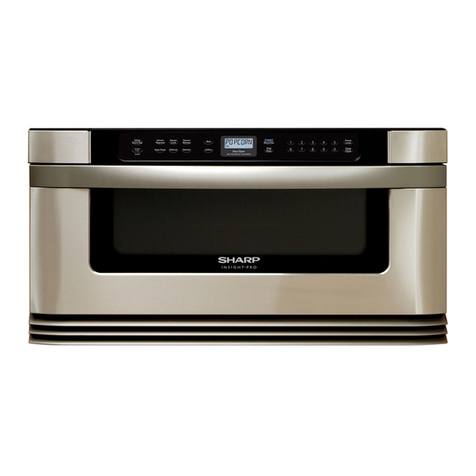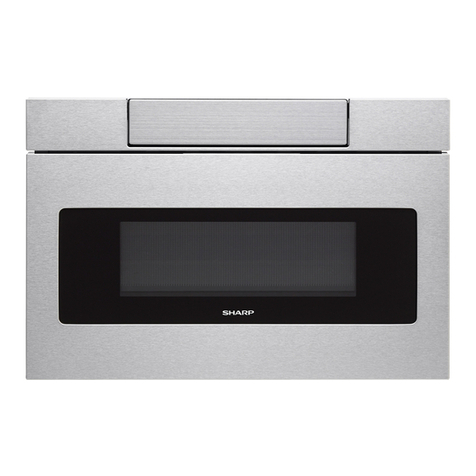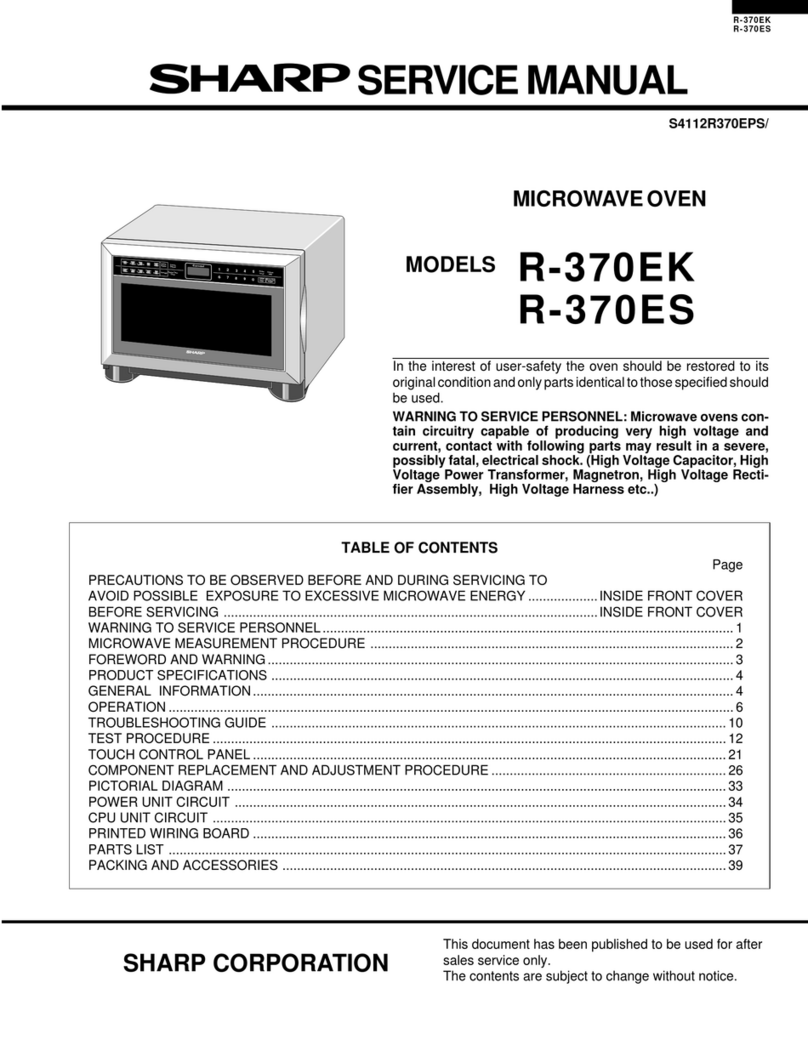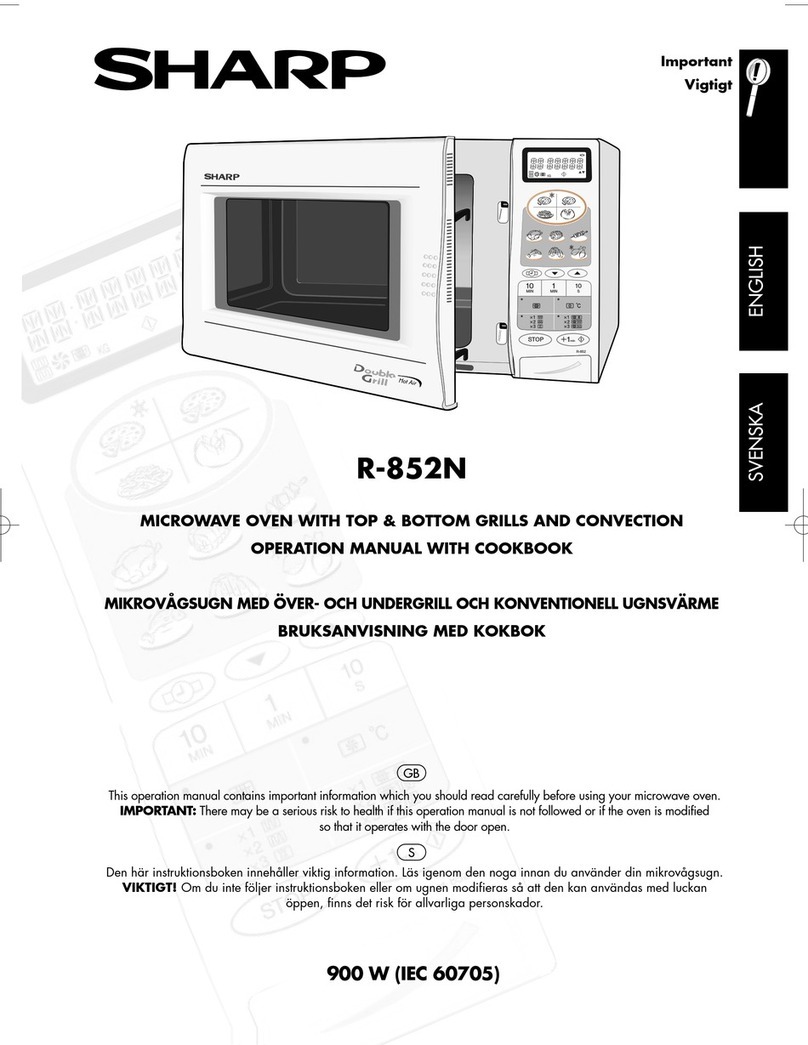
6
OPERATION OF TOUCH CONTROL PANEL
The operation of the oven is controlled by pressing the appropriate pads arranged on the surface of the
control panel.
An entry signal tone should be heard each time you press the control panel to make a correct entry.
Before Operating
door is opened or shut.
•The programme or check mode is cancelled when
any pads are not pressed for more than 3 min-
utes.
•will appear on the display after the time
reaches zero. It will disappear when the oven door
is opened or the STOP/CLEAR pad is pressed.
•When you first connect the microwave oven to an
electrical socket, the digital display will show
.
•Key pad entries can only be made when the door
is shut.
•The oven lamp and cooling fan will continue to
operate for 1 minute after cooking or when the
Volume and Sound Setting
•There are three sellectable volume settings for
the "beeps" made by the control panel, also you
can change the setup to make a series of short
"beeps" to signify the end of cooking, quite dis-
tinct from normal key entry beeps.
To change the volume setting, press the SET pad
twice within 2 seconds. Then hold your finger on
the SIGNAL pad, you will hear the three volume
settings, stop on the one you want.
If you hold your finger on the SIGNAL pad, the
sound will change from a steady "beep" to a
series of short "beeps", again three volume set-
tings will be heard, stopping on one of these
volume settings will change the setup so that the
short "beeps" will be heard at the end of cooking.
To turn off the short "beeping" feature, repeat the
process but stop on one of the first three steady
volume settings.
•Any audible signals will not sound when the SET
pad is pressed first and then an audible signal
will sound when the SET pad is pressed second.
Stop/Clear
•If you want to stop the oven during cooking:
1. Press the STOP/CLEAR pad once.
2. Open the door (except memory cooking).
To start the oven again, close the door and press
the START pad within 1 minute.
•If you open the door during memory cooking, the
programme is cancelled.
•If you want to cancel a programme during cook-
ing, press the STOP/CLEAR pad twice.
•If you want to clear a mistake during program-
ming, press the STOP/CLEAR pad once.
•This oven has 20 memory banks (1-20) which can
store cooking programmes.
•The memory banks 1-0 have been programmed
previously as shown in the table. These prepro-
grammed memory banks can be changed indi-
vidually if required.
•In addition for all memory banks a time constant
1.8 for the double quantity is stored. The stored
time constant can also be changed individually if
required.
•Information in these memory banks is not lost due
to power interruptions. If the power goes off, the
oven does not need to be reprogrammed. No bat-
teries are necessary for this type of memory.
•If you want to memorise or check the programme
or cook using memory 11-20, press the desired
NUMBER pad twice within 1 second.
MEMORY OPERATION
Output Power
100%
100%
100%
100%
100%
100%
100%
100%
100%
100%
Cook Time
10 sec.
20 sec.
30 sec.
45 sec.
1 min.
1 min. 15 sec.
1 min. 30 sec.
2 min.
2 min. 30 sec.
3 min.
Memory No.
1
2
3
4
5
6
7
8
9
0
To check the stored programmes please refer to
"Memory check" on page 10.
To change the stored programmes please refer to
"Memory programme entry" on pages 7-8.
SCA R2398 O/M,01-10 11.12.16, 4:16 PM6
